#national museum of bosnia and herzegovina
Explore tagged Tumblr posts
Text
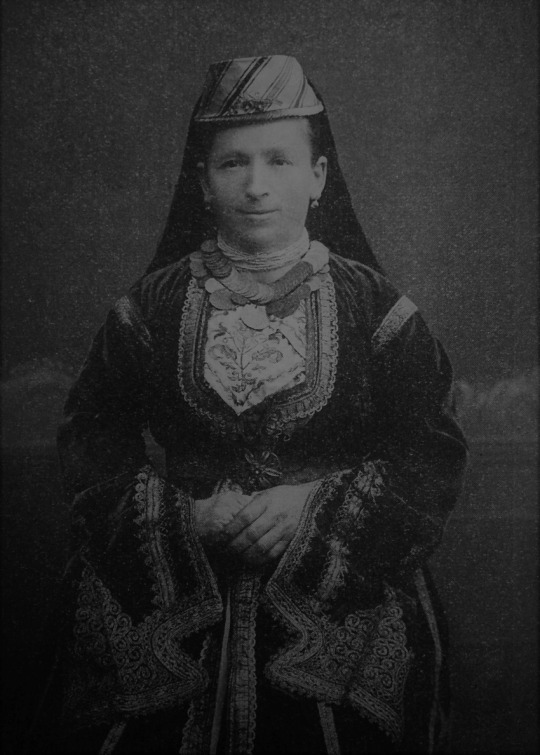


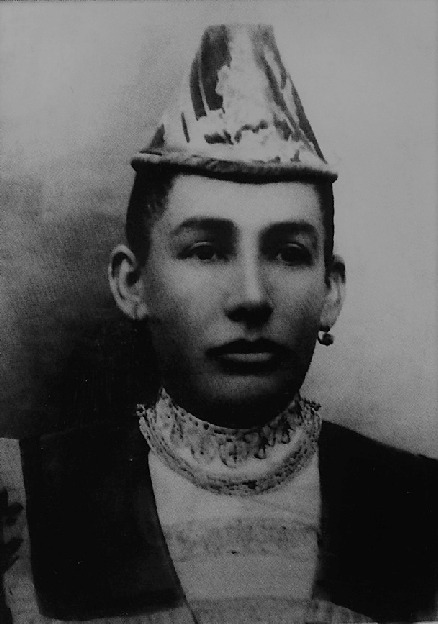
Sephardic Jews from Sarajevo, Bosnia and Herzegovina, 1900s. National Museum of Bosnia and Herzegovina, The Austrian Museum of Folk Life and Folk Art
340 notes
·
View notes
Text

“Butmir Naselia (Sarajevo) Neolithic culture 5500 BC. - 4500 BC Discovered in 1893 by the Austrian authorities. Recognized for its unique ceramics - National museums of Bosnia and Herzegovina”
Instagram/friendswithclay
29 notes
·
View notes
Text
So! As promised, here are some pics from the museum I visited today! The pics are from the Sarajevo 1878-1918 museum. The museum highlights the important moments of the Austro-Hungarian period in Bosnia and Herzegovina. From the occupation in 1878, annexation in 1908, to the Sarajevo assassination (the one where Framz Ferdinand and has wife Sophie were killed in) in 1914:
Picture 1: The territory of the Austro-Hungarian empire before it was dissolved in 1918
Picture 2: Symbols of Sarajevo at the time.
Picture 3: It shows some of the furniture the upper classes of Bosnia and Herzegovina started using after the administration to my country was placed on the Austro-Hungarian empire. My country was in the Ottoman empire for over 400 years, and a lot of people had so called Turkish styled homes, which were big and heavy furniture. When the Austro-Hungarian empire came, so the the westernized furniture come. Some people combined the two styles even.
Picture 4:This is the official declaration on the annexation of Bosnia and Herzegovina, which was signed by the then king Franz Joseph I (Franjo in Bosnian). Fun fact, the annexation wasn't taken lightly by the neighboring countries, especially with Serbia and the then Ottoman empire. Bosnia and Herzegovina was initially only given to A.U. for an undisclosed amount of time and would eventually be returned to the Ottoman empire (per agreement on the Treaty of Berlin). But, with the annexation, the territory was forcefully and officially taken away. This caused a lot of tension with the Russian empire as well, since the nation was an alley to Serbia and the empire had its own plans for the Balkan peninsula, which were now shattered by the annexation. This act helped lay out the grounds for WWI. In history books, it's referred to as The Bosnian crisis.
Picture 5: It's basically the wax figures of Archduke Franz Ferdinand and Duchess Sophie. These are the clothes they wore on the day of their assassination.
Picture 6: Shows the members of the separatist group Young Bosnia (Mlada Bosna) who were the ones to plan the assassination. Gavrilo Princip, the man whose picture is the biggest on display ended up shooting Franz Ferdinand and his wife in the end.
Picture 7: Are the guns used for the assassination. The bottle you see is the one where poison was. Gavrilo Princip, after killing them, planned on taking his own life so that they wouldn't put him through court, but the poison didn't work and he ended up on trial. Side note, some people here call him a hero, but he generally wasn't. He was a killer and supported ideas that would have put the ethnic group I am part of, and other minor ethnic groups at risk. The ones who call him a hero are people who mostly support ethnic cleansings and stuff like Pan-Serbia, which is just no.
Picture 8: Is the uniform of Bosnian soldiers during WWI and picture 10 are some of the weapons they used.
Picture 9: Are the official coat of arms and flag of Condominium of Bosnia and Herzegovina
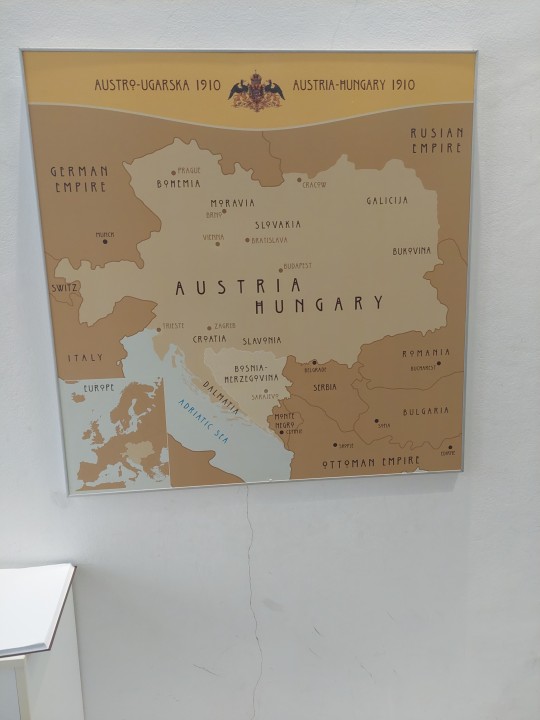
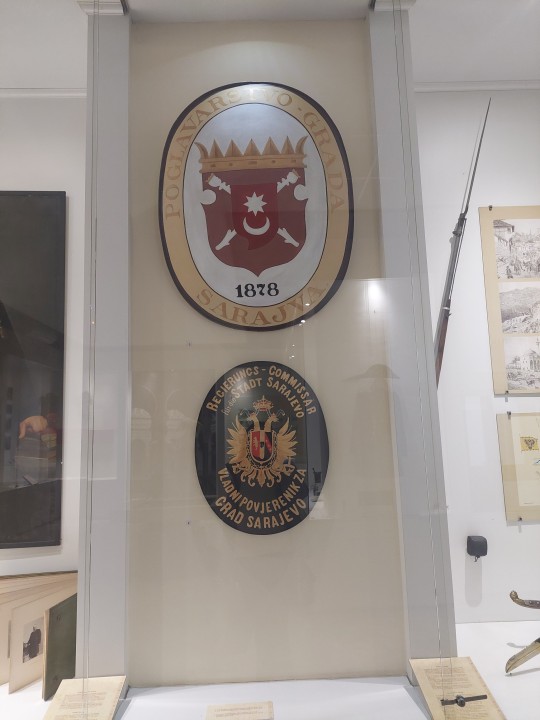
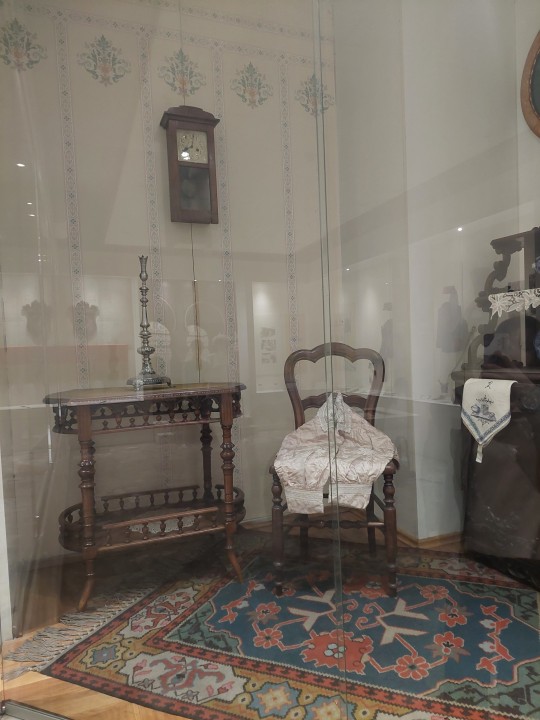
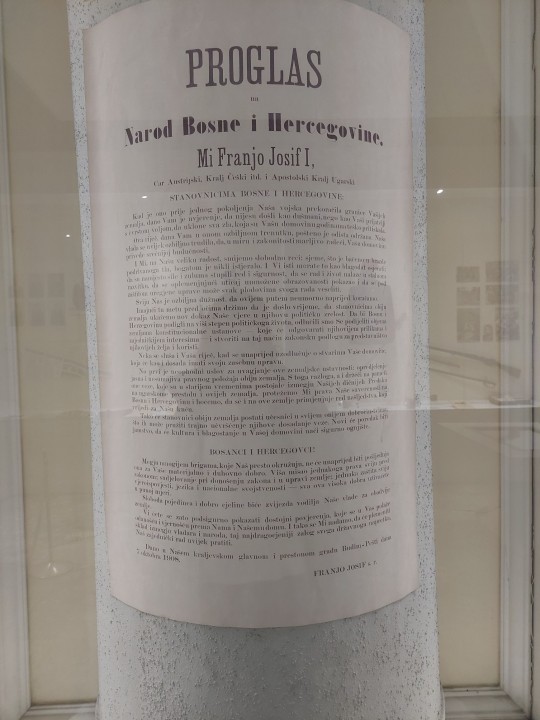
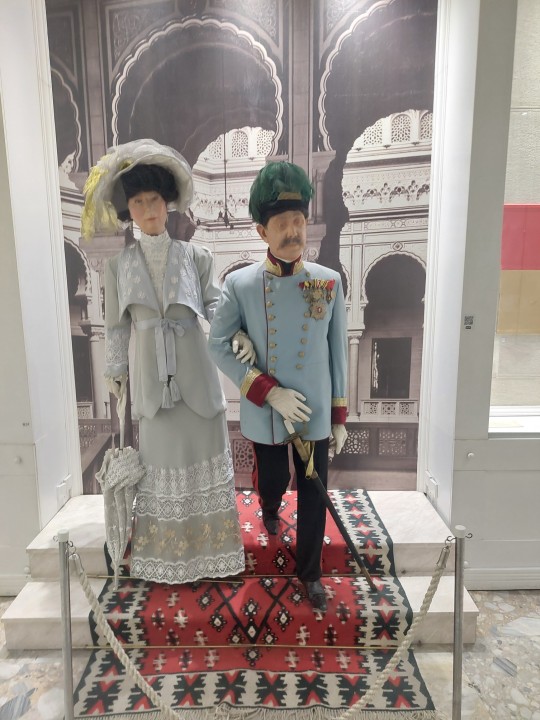


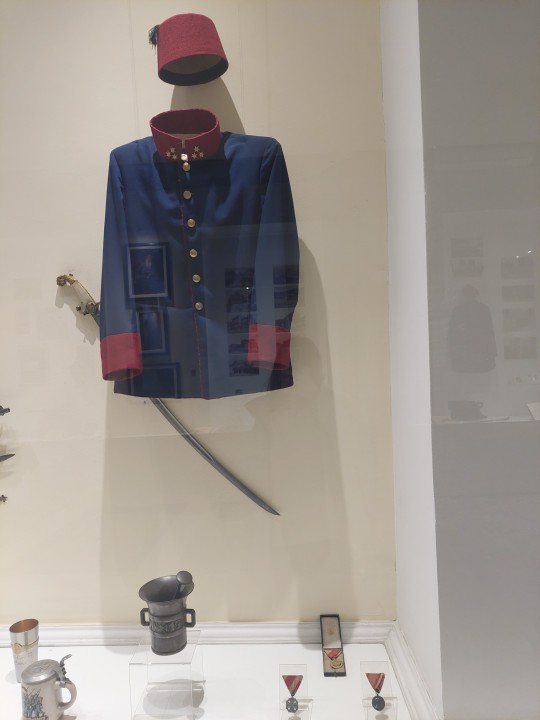


#bosnia#herzegovina#bosnia and herzegovina#history#bosna i hercegovina#sarajevo#sarajevo assassination#world war 1
10 notes
·
View notes
Text

Medieval Stećak (tombstone)
Sarajevo, Bosnia
This stećak is an important tombstone of the region. Scholars contend that it was made during the 14th century and served as the tombstone of the medieval Bosnian King Stjepan II who died in 1353. The illustrations of buildings on the end are believed to be some of the earliest representations of Bosnian domestic structures. The stećak was found in Donja Zgošća near Kakanj, approximately 50 kilometers north of Sarajevo along the Bosna River. The tombstone now sits in the garden of the Bosnia and Herzegovina National Museum in Sarajevo. (photo 2008)
45 notes
·
View notes
Note
I know your not a tour guide but my family says they want to visit Bosnia and Herzegovina this fall and since you're from there I just want to ask if you've got places you'd suggest going to? Thank you 🫶
Fun fact, I actually went to a trading school that was all about tourism. If I wanted to, I COULD become a tour guide LMAO
Here are some locations I think you'd like:
The City of Mostar has a lovely Old Bridge that was built back in 1566 when the country was still a part of the Ottoman Empire. Just the entire Old City is really fun to go through and the food there is great. The Old Town in Sarajevo is also really neat.
If you're interested in religion, I'd say give Međugorje a shot. According to local legend, the Virgin Mary made an appearance there and ever since that day it has become a hot spot for tourists. Be a little careful here though as it has a lot of tourist traps.
The Sarajevo War Tunnel and Museum of Crimes Against Humanity in Mostar are all very grim but important places for the nation. The war ended in the 90's but you can still see and feel the effects of it.
I haven't been there too much but I remember really liking Una National Park and Hutovo Blato. They are very nice places to go to if you like nature. Lots of cool birds in Hutovo Blato!
Also, a little side note, if you're a vegetarian or vegan you're gonna have a hard time finding food here. You have options but they're limited, I'd say 95% of our diet is meat.
3 notes
·
View notes
Note
i would love if you'd shared everything that might be in aelin's list in a world away, all the dream places she wants to go or already went 🤧🥺
First of all - I am so sorry it’s taken me so long to answer this ask 😭
Second - this list is in no way complete. I could probably double it if I gave it some more time (and maybe I’ll edit this post and add some later) but I wanted to answer this ask.
Third - some things listed are cities, some are attractions, some are landmarks or monuments…it’s really a mix of everything. And some major landmarks that cover more than one country are only listed once.
A World Away
So, without further ado, please enjoy
Aelin’s Incomplete and Ever-Adapting World Travel List ✈️
Antarctica
Argentina
Iguazú Falls // Patagonia // Rainbow Mountains // Buenos Aires
Australia
Melbourne // Sydney // Gold Coast // Great Barrier Reef // Adelaide
Austria
Vienna // Salzburg // Hallstatt
the Bahamas
Belgium
Bruges // Brussels
Belize
the Great Blue Hole
Bhutan
the Himalayas
Bolivia
Salar de Uyuni
Bosnia and Herzegovina
Stari Most Bridge // Mostar
Brazil
Rio de Janeiro // Christ the Redeemer // Amazon Rainforest // Lençóis Maranhenses National Park // Sao Paolo
Bulgaria
Cambodia
Angkor Wat
Canada
Niagra Falls // Vancouver // Banff // Toronto
Chile
Easter Island // Torres del Paine National Park // Marble Caves
China
Great Wall of China // Beijing // Shanghai // the Summer Palace // Potala Palace // Tianmen Mountain // Reed Flute Caves // Zhanye Danxia
Costa Rica
San Jose
Croatia
Dalmatian Coast // Diocletian's Palace // Krka waterfall park // Plitvice Lakes // Zagreb
Cuba
Havana
Czech Republic
Prague
Denmark
Copenhagan
Dominican Republic
Ecuador
Quito // Galapagos Islands
Egypt
Cairo // The Great Pyramids & Sphinx // Nile River // Valley of the Kings // Luxor // Aswan
England
London // Thames River // Stonehenge
Estonia
Tallinn
Fiji
Finland
Helsinki
France
Mont-Saint-Michel // Louvre // Eiffel Tower // Alsace Lorraine // Paris // Notre Dame // Sacre Coeur // Versailles // Nice
French Polynesia
Bora Bora // Tahiti
Germany
Munich // Berlin // Black Forest // Oktoberfest // Neuschwanstein Castle
Greece
Santorini // Athens // Parthenon // Roman Agora // Acropolis // Mykonos // Oia // Fira // Corfu // Meteora
Greenland
Hong Kong
Tsim Sha Tsui
Hungary
Budapest // Capitol Hill // Bath Houses
Iceland
Reykjavik // Northern Lights // Egilsstaðir //Ring Road // Blue Lagoon // Vatnajökull National Park // Kirkjufell // Húsavík // Akureyri // Thingvellir National Park
Italy
Roman Colosseum // Amalfi Coast // Florence Duomo // Venice at Carnival // Piazzale Michelangelo // Cinque Terre // Pisa // Venice // Pompeii // Milan
India
Taj Mahal // Varanasi & Ganges River // Golden Temple // Agra // Mumbai // New Delhi
Indonesia
Bali // Komodo Island // Blue Flames at Ijen Volcano // Jarkarta
Iran
Hall of Diamonds
Ireland & Northern Ireland
Cliffs of Moher // Giants Causeway // Galway // Blarney Stone // Trinity College // O'Neills // Belfast // Carrick-a-Rede Rope Bridge // Cobh
Isreal
Dead Sea // Jerusalem
Jamaica
Japan
Tokyo // Mount Fuji // Wisteria Gardens // Osaka // Kyoto
Jordan
Petra // Amman
Kazakhstan
Kenya
Maasai Mara National Park // Lake Victoria
Kyrgyzstan
Luxembourg
Madagascar
Avenue of the Baobabs
Malaysia
Kuala Lumpur // Batu Caves
the Maldives
Male
Malta
Valletta
Mexico
Cabo // Teotihuacán // Chichen Itza // Cabo // Yucatan Peninsula // Mexico City
Mongolia
Gobi Desert
Morocco
Casablanca // Hassan II Mosque // Marrakesh // Chefchaouen // Sahara Desert
Myanmar
Bagan's Temples
Namibia
Nepal
Mount Everest // Kathmandu
the Netherlands
Amsterdam // Van Gogh Museum // Tulip Festival
New Zealand
Auckland // Queenstown // Kawarau Suspension Bridge // Milford Sound // Tongariro National Park // Hobbitton // Dark Sky Sanctuary // Waitomo Caves
Nigeria
Lagos
Norway
Oslo
Panama
Panama City
Peru
Machu Picchu & Huayna Picchu // Lima // Aguas Calientes // Andes Mountains // Huacachina
Philippines
Palawan // Manila
Poland
Krakow
Portugal
Lisbon
Romania
Russia
Moscow // St Petersburg
Rwanda
Volcanoes National Park
Saint Lucia
Samoa
Saudi Arabia
Al-Masjid an-Nabawi
Scotland
Edinburgh // Loch Ness // Inverness // Glasgow // Scottish Highlands
Singapore
Marian Bay Sands
Slovenia
Lake Bled
South Africa
Capetown // Johanessburg // Isle of Elephants
South Korea
Seoul // Jeju Island
Spain
Barcelona // Madrid // Sagrada Familia // Mosque of Cordoba
Sweden
Stockholm // Sweddish Lapland
Switzerland
the Alps // Bern // St Moritz
Tanzania
Mount Kilimanjaro // Serengeti
Thailand
Bangkok // the Grand Palace // Phuket
republic of Türkiye
Cappadocia // Istanbul // Hagia Sophia // Pamukkale
Turkmenistan
Darvaza gas crater
Turks & Caicos
United Arab Emirates
Dubai // Burj Khalifa
United States
Grand Canyon // San Fransisco // Honolulu // Kauai // New Orleans // New York City // Seattle // Portland // Los Angeles // Antelope Canyon // MOMA // Las Vegas
Vanuatu
the Vatican
St. Peter's Basilica // The Vatican Museum // Sistine Chapel
Vietnam
Ha Long Bay // Hoi An // Hanoi
Zambia
Victoria Falls
5 notes
·
View notes
Text
Discovering the Balkans: A Journey Through Southeast Europe

Southeast Europe, often referred to as the Balkans, is a region rich in history, culture, and breathtaking landscapes. For Bangladeshi travelers, exploring the Balkans offers a unique opportunity to delve into diverse traditions, picturesque towns, and stunning natural beauty. This journey will take you through some of the most captivating destinations in the Balkans, revealing the charm and complexity of this fascinating region.
The Journey Begins: From Dhaka to Belgrade
Your Balkan adventure starts with a flight from Dhaka to Belgrade, the vibrant capital of Serbia. With convenient layovers in major international hubs like Istanbul or Dubai, reaching Belgrade is straightforward. Upon arrival, you'll be welcomed by the city's dynamic blend of old-world charm and modern energy. Stroll through the historic Belgrade Fortress, offering panoramic views of the confluence of the Danube and Sava rivers. Explore the lively Knez Mihailova Street, lined with shops, cafes, and historic buildings. Don't miss the bohemian quarter of Skadarlija, where you can enjoy traditional Serbian cuisine and live music.
Sarajevo: The Heart of Bosnia and Herzegovina
Next, head to Sarajevo, a city known for its rich history and multicultural heritage. The drive from Belgrade to Sarajevo takes you through picturesque landscapes and quaint villages. In Sarajevo, visit the historic Baščaršija bazaar, where you can wander through narrow streets filled with shops selling traditional crafts and souvenirs. The Gazi Husrev-beg Mosque and the Latin Bridge, site of the assassination that sparked World War I, are must-see landmarks. Experience the city's unique blend of East and West, reflected in its architecture and cuisine. Try local dishes such as cevapi and burek, and enjoy a traditional Bosnian coffee.
Montenegro: The Jewel of the Adriatic
From Sarajevo, travel to Montenegro, a country renowned for its stunning Adriatic coastline and rugged mountains. Start your exploration in Kotor, a UNESCO World Heritage site known for its well-preserved medieval architecture and scenic bay. Climb the ancient city walls for panoramic views of the bay and surrounding mountains. Continue to Budva, famous for its beautiful beaches and vibrant nightlife. The historic old town, with its narrow streets and Venetian-style buildings, is a delight to explore. Don't miss the opportunity to visit the Lovćen National Park, where you can hike to the mausoleum of Montenegro's beloved hero, Njegoš, and enjoy spectacular views.
Albania: The Land of Eagles
Next, venture into Albania, a country with a rich history and diverse landscapes. Start in Tirana, the capital city, where you can explore Skanderbeg Square, the heart of the city, and visit the National History Museum to learn about Albania's past. The colorful buildings and vibrant street art add a unique charm to the city. From Tirana, travel to Berat, known as the "City of a Thousand Windows" for its distinctive Ottoman-era architecture. The Berat Castle, perched on a hilltop, offers stunning views of the surrounding area. Enjoy Albanian hospitality and traditional dishes such as byrek and tave kosi.
North Macedonia: A Land of Contrasts
Continue your journey to North Macedonia, where ancient history and modern culture coexist harmoniously. In Skopje, the capital city, visit the impressive Alexander the Great statue and the Old Bazaar, one of the largest and most well-preserved in the Balkans. The Stone Bridge, a symbol of the city, connects the old and new parts of Skopje. Travel to Ohrid, a UNESCO World Heritage site known for its beautiful lake and historic churches. The Church of St. John at Kaneo, perched on a cliff overlooking Lake Ohrid, is particularly picturesque. Enjoy local Macedonian cuisine, including dishes like tavče gravče and ajvar.
The Return Journey
As your journey through the Balkans comes to an end, reflect on the diverse cultures, histories, and landscapes you’ve experienced. Each destination offers its own unique charm, making the Balkans a region full of surprises and unforgettable moments.
Conclusion
Discovering the Balkans provides Bangladeshi travelers with an enriching adventure through Southeast Europe. From the vibrant streets of Belgrade to the serene beauty of Lake Ohrid, this journey showcases the region's rich heritage and stunning landscapes.
Plan Your Balkan Adventure with Roomchai Limited
Roomchai Limited specializes in crafting personalized travel packages for Bangladeshi travelers. With expert guidance, seamless logistics, and exceptional service, Roomchai Limited ensures a smooth and enjoyable journey through the Balkans. Let Roomchai Limited handle the details while you explore the wonders of Southeast Europe, creating unforgettable memories along the way.
0 notes
Text
Events 5.24 (after 1940)
1940 – Igor Sikorsky performs the first successful single-rotor helicopter flight. 1940 – Acting on the orders of Soviet leader Joseph Stalin, NKVD agent Iosif Grigulevich orchestrates an unsuccessful assassination attempt on exiled Russian revolutionary Leon Trotsky in Coyoacán, Mexico. 1941 – World War II: In the Battle of the Atlantic, the German battleship Bismarck sinks the pride of the Royal Navy, HMS Hood, killing all but three crewmen. 1944 – Börse Berlin building burns down after being hit in an air raid during World War II. 1944 – Congress of Përment occurs which establishes a provisional government in Albania in areas under partisan control, the first independent Albanian government since 1939. In honor of this the national emblem of Albania inscribed this date from 1946 until 1992. 1948 – Arab–Israeli War: Egypt captures the Israeli kibbutz of Yad Mordechai, but the five-day effort gives Israeli forces time to prepare enough to stop the Egyptian advance a week later. 1956 – The first Eurovision Song Contest is held in Lugano, Switzerland. 1958 – United Press International is formed through a merger of the United Press and the International News Service. 1960 – Following the 1960 Valdivia earthquake, the largest ever recorded earthquake, Cordón Caulle begins to erupt. 1961 – American civil rights movement: Freedom Riders are arrested in Jackson, Mississippi, for "disturbing the peace" after disembarking from their bus. 1962 – Project Mercury: American astronaut Scott Carpenter orbits the Earth three times in the Aurora 7 space capsule. 1967 – Egypt imposes a blockade and siege of the Red Sea coast of Israel. 1967 – Belle de Jour, directed by Luis Buñuel, is released. 1976 – The Judgment of Paris takes place in France, launching California as a worldwide force in the production of quality wine. 1981 – Ecuadorian president Jaime Roldós Aguilera, his wife, and his presidential committee die in an aircraft accident while travelling from Quito to Zapotillo minutes after the president gave a famous speech regarding the 24 de mayo anniversary of the Battle of Pichincha. 1982 – Liberation of Khorramshahr: Iranians recapture of the port city of Khorramshahr from the Iraqis during the Iran–Iraq War. 1988 – Section 28 of the United Kingdom's Local Government Act 1988, a controversial amendment stating that a local authority cannot intentionally promote homosexuality, is enacted. 1991 – Israel conducts Operation Solomon, evacuating Ethiopian Jews to Israel. 1992 – The last Thai dictator, General Suchinda Kraprayoon, resigns following pro-democracy protests. 1992 – The ethnic cleansing in Kozarac, Bosnia and Herzegovina begins when Serbian militia and police forces enter the town. 1993 – Eritrea gains its independence from Ethiopia. 1993 – Roman Catholic Cardinal Juan Jesús Posadas Ocampo and five other people are assassinated in a shootout at Miguel Hidalgo y Costilla Guadalajara International Airport in Mexico. 1994 – Four men are convicted of bombing the World Trade Center in New York in 1993; each one is sentenced to 240 years in prison. 1995 – While attempting to return to Leeds Bradford Airport in the United Kingdom, Knight Air Flight 816 crashes in Dunkeswick, North Yorkshire, killing all 12 people on board. 1999 – The International Criminal Tribunal for the former Yugoslavia in The Hague, Netherlands indicts Slobodan Milošević and four others for war crimes and crimes against humanity committed in Kosovo. 2000 – Israeli troops withdraw from southern Lebanon after 22 years of occupation. 2002 – Russia and the United States sign the Moscow Treaty. 2014 – A 6.4 magnitude earthquake occurs in the Aegean Sea between Greece and Turkey, injuring 324 people. 2014 – At least three people are killed in a shooting at Brussels' Jewish Museum of Belgium. 2022 – A mass shooting occurs at Robb Elementary School in Uvalde, Texas, United States, resulting in the deaths of 21 people, including 19 children.
0 notes
Text
University and community archives both are doing so much important work in curating and preserving queer history! And even the academic collections are generally still open to the public, whether that looks like you coming into the reading room at a local university to look at their materials or emailing the librarians to ask for photos or scans of them.
Also, like, even if they're affiliated with institutions, queer archives at universities and museums are generally still curated and cared for by queer folks. I work in a queer history archive at my university, and all of us who regularly work with the collections are queer, the curator is even another trans person, and we have strong connections with other queer people and organizations in the surrounding community.
Academic and cultural institutions like historical societies, libraries, and universities have facilities built to preserve archival materials -- everything from books and zines to pins, banners, t-shirts, and etc -- and people trained in curation and conservation. And often we want to connect with the local community so we can house and preserve their stories and materials for a long time!
All the archives that have been added to this post are great, but here's a few more to look at if you're interested in finding a queer archive near you -- or one further away with materials that interest you. Australia: The Australian Queer Archives
Bosnia & Herzegovina: Kvir Arhiv
Canada: The ArQuives (formerly the Canadian Lesbian & Gay Archives)
Archives Gaies du Québec
The Transgender Archives at the University of Victoria
France: Conservatoire des Archives et des Mémoires LGBTQI, Le Académie Gay & Lesbienne
Germany: Das Lila Archiv
Bibliothek & Archiv at the Schwules Museum
Spinnboden Archiv (focused on lesbian history)
Bibliothek & Archive at Centrum Schwule Geschichte
Forum Queeres Archiv München (focused on queer history in Bavaria and Munich)
The Netherlands: LGBT Heritage Collection at the Internationaal Homo/Lesbisch Informatiecentrum en Archief
Norway: Skeivt Arkiv at the University of Bergen
South Africa: GALA Queer Archive
Switzerland: Verein Schwulenarchiv Schweiz (focused on the history of gay men in Switzerland)
The United Kingdom: LGBTQ Collections at the Glasgow Women's Library
LGBTQIA+ Archives at the Bishopsgate Institute
The Hall-Carpenter Archives at the London School of Economics and Political Science
The LGBTQ Histories Collection at the British Library
Queer Heritage South/Queer in Brighton
LGBTQ+ Collections at the National Museums, Liverpool
The United States: The Human Sexuality Collection at Cornell University
The Stone Wall Center at the University of Michigan Amherst
The Gay & Lesbian Collections and AIDS/HIV Collection at the New York Public Libraries
OutLoud Collection at StoryCorps (an oral history project)
The LGBT History Project at Dickinson College and the LGBT Center of Central Pennsylvania
The Rainbow History Project (focusing on queer history in Washington D.C. and the surrounding area)
The Invisible History Project (focusing on queer history in Alabama and the American South)
LGBTQ+ Collections at the University of South Florida
The Stonewall National Museum Archives & Library
The Saint Louis LGBT History Project
LGBTQ Religious Archives Network
The Gerber/Hart Library and Archive (focusing on Midwestern queer history and culture)
The Kinsey Institute Collections at Indiana University
The Jean-Nickolaus Tretter Collection in Gay, Lesbian, Bisexual and Transgender Studies at the University of Minnesota
The National Transgender Library and Archive Collection at the University of Michigan
The Gay and Lesbian Archives of the Pacific Northwest
ONE National Gay & Lesbian Archives at the University of Southern California
The Lambda Archives of San Diego
The James C. Hormel Center at the San Francisco Public Library
Also -- I know what's happening today is incredibly scary, but there are so many archives all over the world documenting our history, and so many people devoting their lives to preserving everything from groundbreaking political manifestos to kitschy ephemera. And supporting queer archives is more important than ever. My first day of work in the collections, the curator handed me a charred book that had been rescued from the Institut für Sexualwissenschaft book burnings, and nothing has ever driven home more that the work of archivists is both critical and powerful, especially in this day and age. Support queer archivists and queer archives, save materials and find one to house your own collections no matter how random they might seem, and go out and learn about our history!
We need a digital archive of LGBTQ+ works of art, science, and every other conceivable work we can share between each other because we are beyond the genocide warning level in most countries in the west and they're already trying to purge us from libraries.
#happy pride month i got really passionate about queer archives#also yes! some of these are in places with scary politics right now! but resistance is the point!#everyone deserves access to history regardless of where they live!#nate at the museum
32K notes
·
View notes
Text


Wowed by an exhibit on the Forests of Bosnia and Herzegovina at the National Museum. Sadly no photos allowed.
Nearby monument to the inadequacy of the international response to the seize of Sarajevo. It reads "monument to the international community" "grateful citizens of Sarajevo"
0 notes
Text




The National Museum of Bosnia and Herzegovina (Земаљски музеј Босне и Херцеговине), Sarajevo, BiH, 2021
1 note
·
View note
Text
2. Please contextually reference your subject matter. What art, design, cultural, historic references can you look at to gain insight? Describe them and why they are relevant.
Leading on from my previous point, someone that has encouraged community surrounding craft (in this case knitting) is Danish knitwear designer Learke Bagger. In lockdown she released a free jumper pattern on instagram to unite the knitters of social media. The project attracted the attention of beginners and experts alike and placed a focus on using up whatever scrap yarn you have at home, using simple, beginner-friendly techniques. The project has many parallels with the ‘make do and mend’ mentality during WW2 where many people who had never sewn or knitted picked up new skills to repair and make when clothes were rationed. It's interesting to see how things once done out of necessity are becoming normalised as we are increasingly mindful of our waste production.
Chinese Ge Ba textiles were also created with the aim to reduce waste. These textiles were produced in the mid 20th century from scraps of fabric saved from old clothes, furnishings and offcuts. The scraps were then layered and adhered together with rice glue to create a thick material, often used to line the soles of shoes. Today, the textiles are popular among folk art collectors for their unique designs and compositions- the layering of fabric created beautiful collages. I think these textiles are fascinating as they are unique to China. Although it is upsetting to think of how they are a product of necessity, they prove that no scrap is too small to waste and that unique new materials can be fashioned from overlooked sources.
Bosnian artist, Maja Bajevic, celebrated traditional Bosnian craft through her piece: Women at Work, Under Construction. This 5 day sight specific performance piece was produced at the National Museum in Bosnia and Herzegovina which was being repaired after being damaged in the Yugoslavian wars. Bajevic employed five Bosnian women refugees to embroider traditional folklore patterns onto the protective net surrounding the scaffolding. I love this piece for many reasons, one being how she chooses champion craft, more specifically embroidery, which has not always been recognised in the art and design world. Especially in history, craft techniques were not valued as highly as fine art, despite the incredible efforts of talented craftspeople. The piece also highlights the resilience of the tradition of craft- even in the face of war, the knowledge and practice of craft will prevail.
Another reference that inspires me is the Campana brothers’ Transplastic chairs. These chairs are an amalgam of the cheap plastic garden chair and beautifully organically woven wicker. These pieces make me think about the loss of craft in the everyday and how we could begin to implement it more into the modern day. Craft can be used to repair man-made products and even improve them, much like the Japanese art of kintsugi.
0 notes
Text
National Museum
First of all, thank you for being patient! I started classes at Georgetown on Wednesday and arrived back in the US on Tuesday night, so it’s been a very quick adjustment with only a little time to edit photos and write these posts (I LOVE my classes, though!)
Today, I’m going to take you on a walk through two national museums. The first is Sarajevo itself, which is a preserved testament to its…
View On WordPress
#Bosnia#Bosnia and Herzegovina#capital#corinthian#cultural heritage#culture#dalmatia#doric#illyrium#ionic#kingdom of bosnia#museum#national museum of bosnia and herzegovina#photography#stecak#stecci#travel abroad#travel blog
9 notes
·
View notes
Text

Studio portrait of a girl dressed as a highlander from Herzegovina. Taken in Budapest, 1898, by Vágó Bertalan. National Museum of Bosnia and Herzegovina.
206 notes
·
View notes
Photo



Without words, without writing and without books there would be no history, there could be no concept of humanity.
- Hermann Hesse (Nobel Prize for Literature 1964)
The Bosnian War (1992-1995) was a long, complex, and ugly conflict that followed the fall of communism in Europe. In 1991, Bosnia and Herzegovina joined several republics of the former Yugoslavia and declared independence, which triggered a civil war that lasted four years. Bosnia's population was a multiethnic mix of Muslim Bosniaks (44%), Orthodox Serbs (31%), and Catholic Croats (17%). The Bosnian Serbs, well-armed and backed by neighboring Serbia, laid siege to the city of Sarajevo in early April 1992.
They targeted mainly the Muslim population but killed many other Bosnian Serbs as well as Croats with rocket, mortar, and sniper attacks that went on for 44 months.
As shells fell on the Bosnian capital, nationalist Croat and Serb forces carried out horrific "ethnic cleansing" attacks across the countryside.
Finally, in 1995, UN air strikes and United Nations sanctions helped bring all parties to a peace agreement. Estimates of the war's fatalities vary widely, ranging from 90,000 to 300,000. To date, more than 70 men involved have been convicted of war crimes by the UN.
A three-day Serb assault in August 1992 on the National and University Library in Sarajevo, for example, destroyed the late-19th-century Moorish revival building and reduced 90 percent of its 1.5 million volumes to ashes.
Aida Buturovic, a 32-year-old librarian in the exchanges section, was killed by sniper fire as she and her colleagues tried to rescue some of the rarest books in the Bosnia National and University Library in Sarajevo from the flames.
Burning books is not an act of war but an act of evil cowardice. Burning libraries to the ground is not act in defence of civilisation but an act of mindless barbarism.
As tragic as Aida’s death was there was some silver lining to her sacrifice. A short time after, Aida’s sister, Amila, teamed up with Andras Riedlmayer, a Harvard Islamic art bibliographer at the Documentation Center for Harvard's Aga Khan Program in Islamic Architecture at the Fogg Art Museum.
Hungarian born Riedlmayer began giving talks about the loss of Bosnia's libraries in 1993. ''Your first response is 'Why doesn't somebody do something?'” he said, ''You never imagine you'd have to do it.'' After a talk to the Middle East Studies Association in Research Triangle in North Carolina., a Bosnian woman who attended told him that 30 cabinets of foreign microfilm had also been destroyed during the attack on the Oriental Institute in Sarajevo. Almost simultaneously, Riedlmayer and the Bosnian both realised that an equal amount of Bosnian microfiche must exist outside the war-torn country since it is common practice for libraries to build their international collections through microfilm swaps.
And so Riedlmayer along with Amila and others to create the Bosnian Manuscript Ingathering Project. The aim was to enable scholars and librarians to register the whereabouts of microfilm and photocopies of important Bosnian manuscripts. The immediate aim was to compile a database of the locations of these materials so that Bosnian librarians could obtain them later. Other librarians and universities around the world helped out to reconstitute destroyed Bosnian collections.
The Internet Ingathering Project has thus far led to the discovery of about 500 pages of photocopies that reproduce all or part of about 25 to 30 destroyed manuscripts. Although thousands of codices and countless shelf-metres of archival documents were turned to ashes, in some cases the shadows of the lost originals may still endure in a variety of formats. The seach continues.
Aida Buturovic. Remember her name.
History matters. Memory matters. Culture matters.
**A note on heroic act of Aida Buturovic by Middle East Librarians Association (MELA): 'Killing Memory: The targeting of Libraries and Archives in Bosnia-Herzegovina' (Published in Fall 1994)
#hesse#hermann hesse#quote#aida buturovic#bosnian war#sarajevo#war#serbian#sniper#murder#books#reading#library#burning books#riedlmayer#history#bosnia#culture#memory#civilisation#western europe#europe
161 notes
·
View notes
Text
10 Most Beautiful Towns in Europe

Paris Rome Barcelona and other European cities are well-liked tourism destinations for a reason. The gorgeous architecture and much of the culture as seen in the major cities can be found in little towns all over the continent, but there are few tourists to enjoy them with. here are a few of your rope’s most gorgeous small towns from a peaceful coastal village to medieval fortresses perched atop hills, that are sure to pique the curiosity of any traveler who enjoys exploring. 1.Giethoorn, Netherlands Giethoorn is often referred to be the Dutch equivalent of Venice, yet there is one significant factor that, the Italian city excels at tourism. Since there are no automobiles in the middle, the only way to move around is on foot or by boat, much like in Venice, life is centered on the river. Visit the thatched homes perched on peat-filled islets by boat. Hungry? Visit the Hollands-Veneti restaurant, which has a Michelin star. Giethoorn, Netherlands 2. Guimarães, Portugal Guimares is significant to the history of Portugal since it was chosen as the nation's first capital in the 12th century. The medieval district of Guimares is still mostly intact and is home to convents, beautiful old palaces, and a decaying castle built on top of a cliff, like everywhere else in Portugal, produces excellent pastel de nata, but you should also try the torta di Guimares, a pastry filled with squashand crushed almonds. Guimarães, Portugal 3. Roscoff, France Port cities can be filthy. Not, however, charming Roscoff in the Brittany region of France, which made its fortune through marine trade, particularly the export of its well-known pink onions to the UK. In addition to being a lovely Breton town, it is now a hub for thalassotherapy, which uses seawater to treat medical issues. Small fishingboats bob in the harbor, which is surrounded by a bigger one where ferries depart for Plymouth, England. Roscoff, France 4. Anghiari, Italy Anghiari, a charming walled village that clings to the mountain at the border of Tuscany and Umbria, is perched on a hillside. It is a network of pedestrianized alleys and rollercoaster streets filled with opulent palazzi that were constructed by the shadowy, mercenary 'men of arms who resided here during the Renaissance. Visit the Museo Della Battaglia di Anghiari, which chronicles the history of a significant medieval conflict that took place on the plain ou side the town, to learn more about them. Anghiari, Italy 5. Nafplio, Greece In the Peloponnese and spanning the Aegean Sea sits lovely Nafplio. A picturesque Old Town emerges from beyond the old fortifications, and its Venetian-built castle projects into the water. This city, which served as the first capital of modern Greece, offers a wide variety of activities. There is a lido if you want to securely swim in the ocean. The archaeological museum offers items from the Mycenean era if history is more your thing. Nafplio, Greece 6. Mostar, Bosnia and Herzigovina The Ottomans constructed Mostar's Stari Most, or the "Old Bridge," in the sixteenth century, and it has long been regarded as one of the finest examples of Balkan Islamic architecture. One of the most iconic landmarks in the Balkans, the Neretva River Bridge arcs high over the river, and although locals used to jump off of it, it is now a stop on the Red Bull Cliff Diving World Series. During the Balkan wars in November 1993, Croat forces demolished the bridge. After the bridge was rebuilt in 2004, Mostar became a well-liked tourist attraction in Bosnia and Herzegovina and a well-liked day excursion from Dubrovnik, which is located in Croatia. Mostar, Bosnia and Herzigovina 7. Mazara del Vallo, Sicily Mazara del Vallo is an excellent example of how Sicily is a melting pot. A variety of civilizations have migrated across the island since the Phoenicians established it about 3,000 years ago; the Kasbah neighborhood is comparable to a north African medina, there is a sizable Tunisian minority, and couscous is more frequently offered on the menu than pasta. The Satiro Danzante, often known as the dancing satyr, is a prehistoric bronze statue that was retrieved from the sea in 1998. Mazara del Vallo, Sicily 8. Clovelly, UK In the past, donkeys were the only means of transportation up and down the steep alleys of the charming fishing village of Clovelly in Devon, southwest England. It is located at the base of a 400-foot cliff, so as of today, they have still not been able to get cars in. Instead, products are moved by human-powered sleds; if visitors can't handle the climb back up to the parking lot, they can ride in a Land Rover. Clovelly, UK 9. Dinkelsbühl, Germany Dinkelsbühl boasts a charming medieval town, timbered homes, and sturdy turrets. It is located right along Germany's "Romantic Road," which is recognized for its picturesque cities. It served as the backdrop for Werner Herzog's movie "The Enigma of Kaspar Hauser," which was encircled by medieval walls and included the enormous Gothic church St. George's Minster. Dinkelsbühl, Germany 10. Kenmare, Ireland In County Kerry, Ireland's southwest, the land merges with the sea. The Roughly River flows into the sea in the same-named bay where Kenmare is located. This is situated on the Wild Atlantic Way, between the Ring of Kerry and the Ring of Beara, in the midst of some of Ireland's most beloved regions. Kenmare is renowned for both its cuisine and vistas of the majestic mountains that rise behind the clear bay. Kenmare, Ireland Read the full article
2 notes
·
View notes